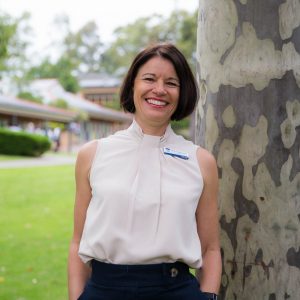Published on September 16, 2022
HVGS is at an exciting point: we are embarking on a new strategic vision and plan. I have always found strategic planning energising for two reasons. Firstly, it enables us to affirm who we are and want to be. Secondly, it involves horizon scanning as we imagine our possible futures. Through a rigorous strategic planning process, we enter the world of possibilities and articulate our preferred future for the school.
The “Cone of Plausibility” (source) is a tool from futures thinking (you can watch a video about it here). When we engage in futures thinking, we must remember that there are many futures not one on the horizon. The Cone of Plausibility works with three Ps of the future. The plausible future contains the likely futures based on what we already know and so it represents safe assumptions about the future. Possible futures represent the “anything that could happen scenario”, including all wild cards that could result from a range of wild cards. It contains all possible scenarios, not only the plausible ones (including the idea that it is possible I could win the lottery or find a cure for old age that is accessible to everyone). Both plausible and possible futures represent what we think could happen based on inbound change; that is, change that will happen externally to us. It is futures modelling based on what we believe could happen because of everything that is happening beyond school (in the workforce, in tertiary education, in technology innovation). When we focus on the first two Ps – plausible and possible – we build our strategic planning as a response to external forces that could impact education.
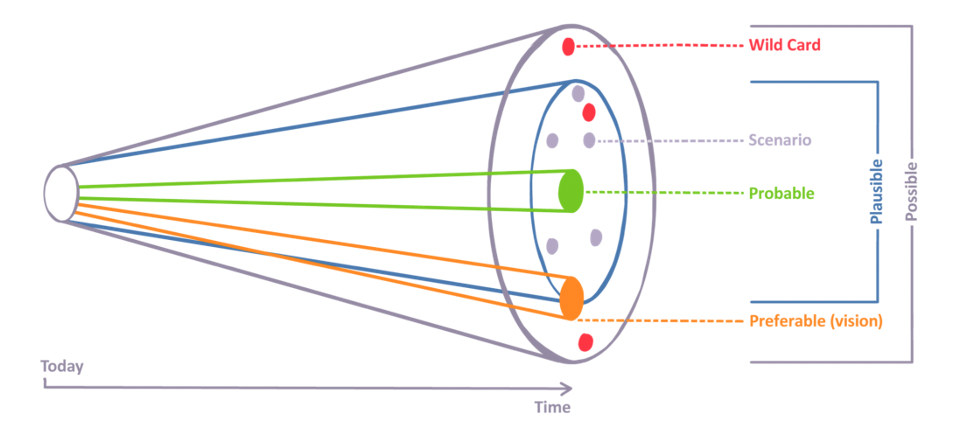
The third P is our Preferred Future for HVGS. When we engage in preferred futures thinking, we are focused on “outbound change”. Our actions and our planning reflect what we want from the future and how we will adapt inbound change possibilities to bring them closer to our visionary futures. It is a future centred on our values and identity. It is not one where change happens to us, or where we “roll with the next best innovation” but one where we evaluate and critique the plausible and possible futures on our horizon and create a vision for a preferred future based on our values. Our DNA or “North Star” remains intact in this scenario and the “why” of change is deeply connected to the HVGS identity. It is a method of futures thinking that creates agency across an organisation and a shared sense of purpose.
In my last blog post I shared emerging thinking about the HVGS identity. As we build our strategic plan, this will be at the centre of our work and our statement about the future. From there we will adapt inbound change to generate our preferred vision.
There are inbound changes that HVGS cannot ignore and should not ignore. For instance, we know that there is increasingly linguistic and cultural diversity in Australia. According to the 2021 Census Data, over 50% of the Australian population are first- or second-generation Australians.
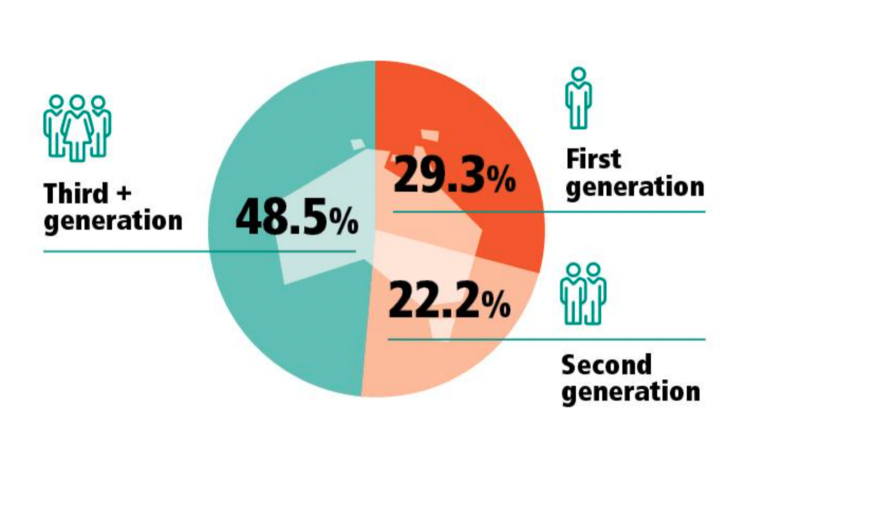
Likewise, Australia is ranked sixth in terms of linguistic diversity. Both data points have implications for our language and inclusion policies, and the need to build our students’ intercultural competencies. We need this to “future proof” our students for a world where cultural, religious and linguistic diversity is a norm not a curiosity.
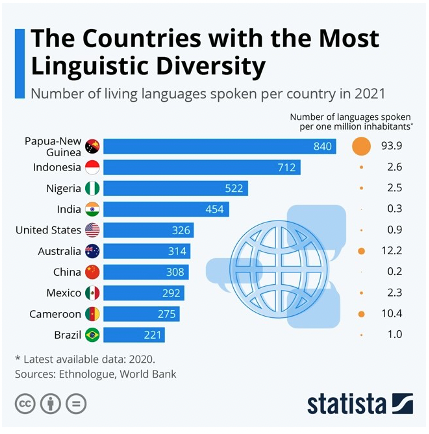
In addition, increasing numbers of people are identifying as Aboriginal or Torres Strait Islander in Australia. This is a positive trend and signals the increasingly value we place on Indigenous cultures and histories. Again, our inclusive practices must mirror and model this value.
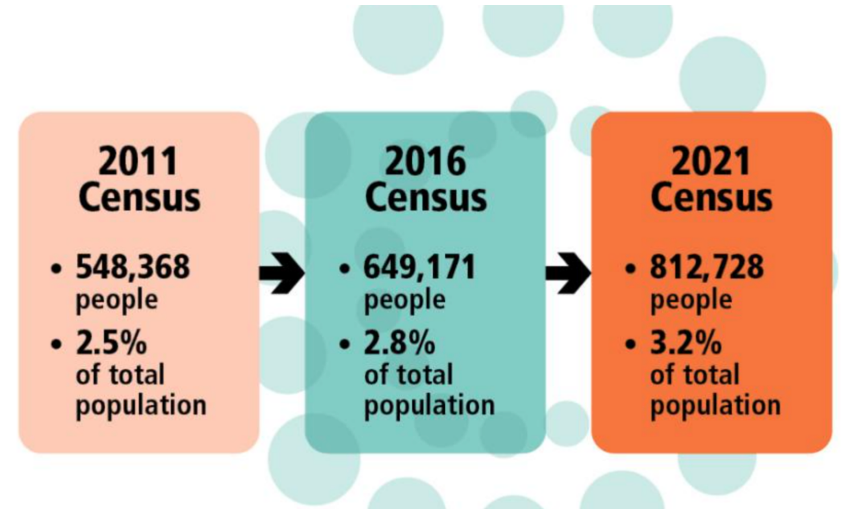
As we scan the horizon, we know that the future of work is changing to bring into focus hybridity, purpose, relationships and connections, opportunities for reflection, and the ability to work across generations. We need to prepare our young people for these shifting realities in the world of work (see the McCrindle reports “Australia Towards 2020” and “Equipping Students to Thrive in the New World of Work”). Increasingly people are looking for purpose in their work and for employers and businesses that operate from a strong ethical framework. Schools, then, need to help student connect with their “why” and develop their capacity for ethical thinking.
There are also “thorny” problems on the horizon. The State of the Environment Report (2021) puts it well: “Ongoing environmental decline also has negative economic impacts on industries, businesses, regions and individuals. … Humans have a profound influence on the environment, and we must embrace our role as custodians of the lands and seas.” To solve a thorny problem such as this, students must have a strong sense of efficacy and understand the power of collective responsibility and action. Similarly, they have to be comfortable with cognitive dissonance and be systems thinkers:
“To improve the outlook for our environment, communities and economy, we will need to strengthen and build connections: connecting people with Country; connecting economics with the environment; and connecting biodiversity, lands, rivers, seas, skies and soils.
We need to learn from both western scientific and Indigenous knowledge systems, and to connect with each other. Individual, community, industry and government action are all needed.”
(State of the Environment Report, 2021)
To tackle the thorny issues of climate change and jobs for the future, world peace, rising economic disadvantage (the widening gap between the “haves” and “have nots”), the construction of future proof cities, the integration of AI across industries, the upskilling of works in an age of digital disruption, we need Human Centre Learning Systems (see Knowledge Works).
“Human-centered learning would represent a systemic shift that would align learning structures, policies, practices and learning experiences around the flourishing and well-being of the people involved in education – including students, teachers, administrators, families and community members.” – Knowledge Works, 2020
Intentional strategies for collective and individual wellbeing is a part of our plausible future. It is an inbound change that we must grapple with. However, it is also part of our preferred vision for the future and this means that we take charge of this inbound change, look at our possible futures for wellbeing at HVGS, and focus on developing a strategy that reflects our context and values. We keep the HVGS values and identity at the centre of how we create a vision for wellbeing and how we enact it.
So, strategic planning is an exciting space. There is much on the horizon, and it can be daunting to know what do to with all the possible futures Australia and the world is facing. As the Principal I am lucky as I get to scan the horizon, listen to futures experts, read widely, and explore possibilities. In the end, though, all those possible futures remain overwhelming and alienating for many of us unless we shift our focus to outbound change. This means adapting inbound changes to create a preferred vision for the future that centres our values and identity, while ensuring HVGS is the future-focused, innovative school of choice in the region.

